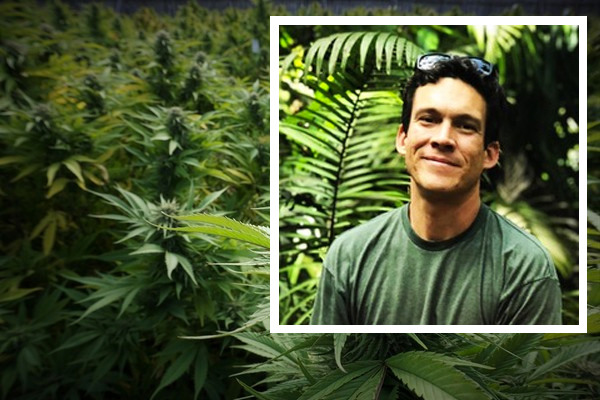Adrien Alvarez is the director of cultivation for Stash Ventures, a cannabis company based in Michigan. “Michigan is the land of plenty,” Adrien says. “There is a lot of cannabis culture here, as well as many caregivers who crossover into the regulated market.” However, there are many hurdles to get through to successfully enter the regulated cannabis industry. “First and foremost, lots of the challenges arise with the municipality where you operate. I cannot stress enough how beneficial it is to have a good relationship with the governing body, and to show them how said cannabis operation will contribute to the community. That’s the first hurdle: figure out if this model is right for you.”

Cultivation method
Then, the next hurdle is to understand which cultivation method and system is the best one for one’s operation. “You have to consider the external climate,” Adrien points out. “Greenhouses are very nice, and they have many benefits. At the same time, you have a lot of humidity control and so forth, and, generally speaking, it might be quite tricky to thoroughly control the environment in its entirety. This is why I personally prefer indoor.”
“Indoors, you can have a more consistent output, based on a more consistent climate and cultivation practices. I feel like in the winter times, you are going to fight so hard to warm up the greenhouse, and in the summer you fight with the high humidity and heat. Here in Michigan, greenhouses are an uphill battle. Of course, it depends on where you are in the state: some climates might be more beneficial; but even there, those greenhouses are truly hybrid systems, where you basically implement the indoor mindset to the greenhouse system.”
Also in terms of sustainability, both these kinds of facilities have pros and cons; but ultimately, it all comes down to the grower’s approach. “Sustainability wise, they can be shoulder to shoulder,” Adrien remarks. “Obviously, the budget and the location factor in a lot, and you have to be wise in terms of resource management with regards to saving on your input: power, water, and nutrients, for instance. However, it really comes down to the grower and their skill level, as well as how the facility has been designed.”
Large-scale cultivation
Another hurdle to get past is understanding what large-scale cultivation entails. “It is of the utmost importance to understand the economy of scale,” Adrien observes. “How much you can throw at a crop to basically keep it stable, and to keep it at a peak state of health while not being submerged by expenses. In the regulated markƒƒet everything is closely monitored; so, the more complicated you make the system, the more complicated it is to keep it up.”
“I, as a grower, keep it very simple and comprehensive: use a simple fertilizer regiment, I use to monitor the substrate closely, which aids in monitoring the nutrient concentration and the water content. I also capture and ozone disinfect all my run off (leachate), and utilize it in my nutrient recipes.” This is why Adrien employs a closed water system in his operation. “In this way, the impact on the environment is greatly reduced.”
Adrien has been leveraging his experience as a cannabis grower and as a horticulture graduate to help MJ12Design Studio to better serve its client growers. “I have known Sam Andras, CEO and founder of MJ12Design Studio, since last December, and we have been working on some projects together,” he says. “Sam is an awesome architect: he has the highest understanding to what a commercial grower needs. He asked me to collaborate with him because he wanted to maximize the architect-grower pair, and fine-tune this into the grower’s needs.”
Most efficient way possible
And now that the corona crisis has demonstrated that the cannabis industry could be recession proof, it is now more important than ever to set up one’s operation in the most efficient, and best way possible. “It is a very elastic product,” he says. “The supply chain has to respond to this increase in the demand, so that prices go down reinvigorating the market as a whole. Thus, it is of the utmost importance to rely on a cultivation facility and method which is close to perfection, in order to get a seat at the cannabis table.”
For more information:
Mj12 Design Studio
7430 East Caley Ave
Suite 280E
Centennial, CO 80111
720.258.4780
mj12designstudio.com
